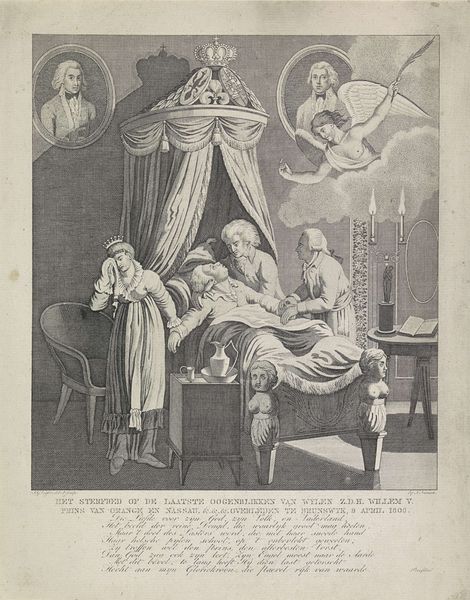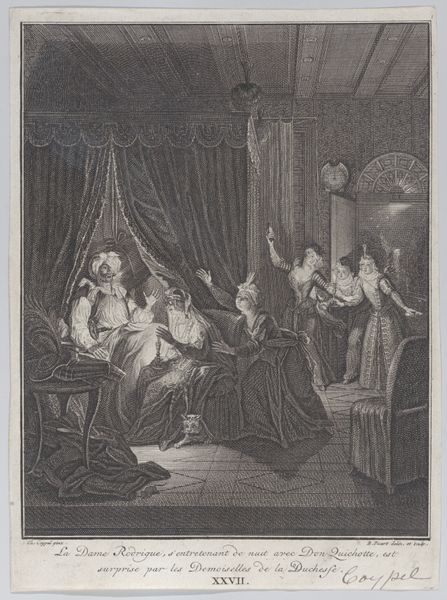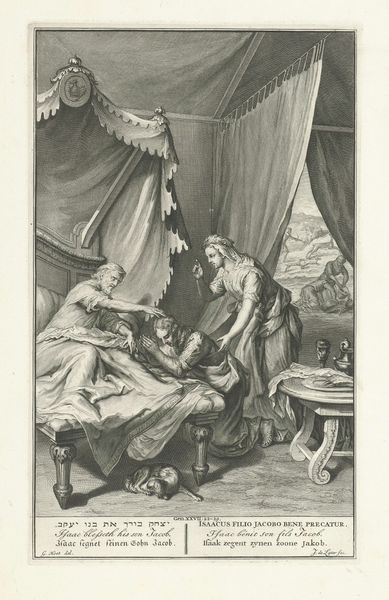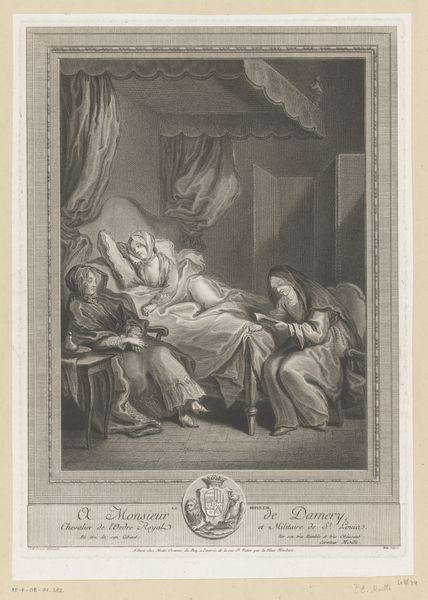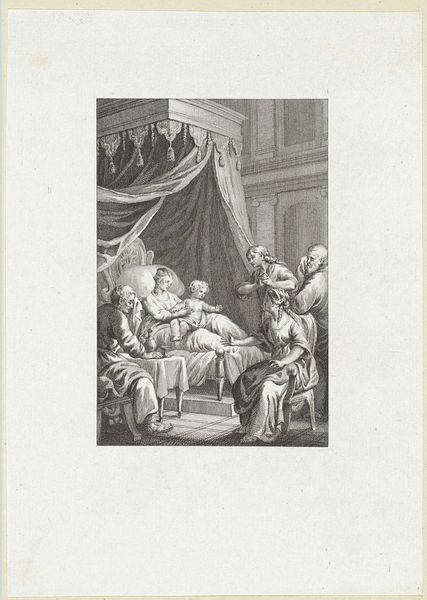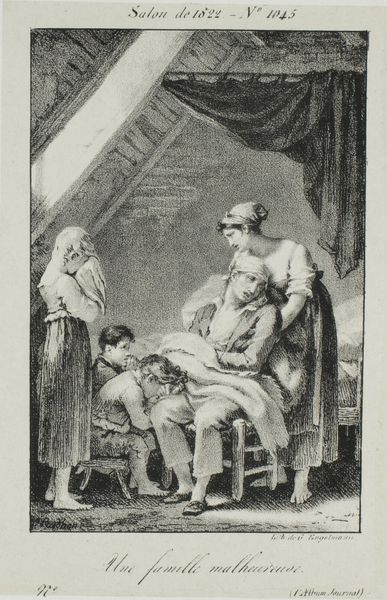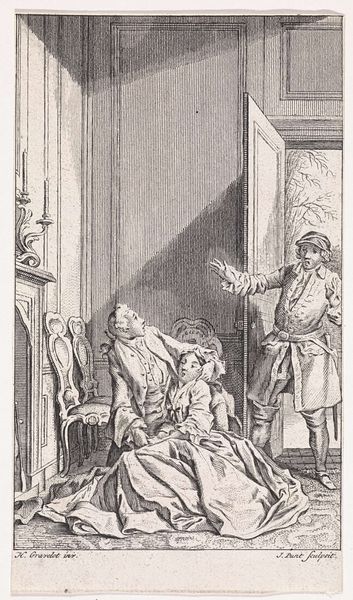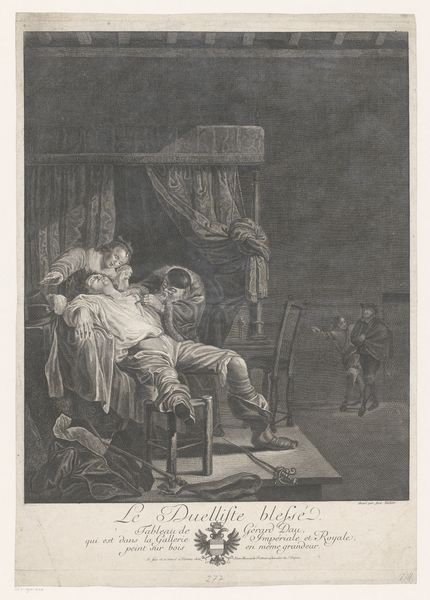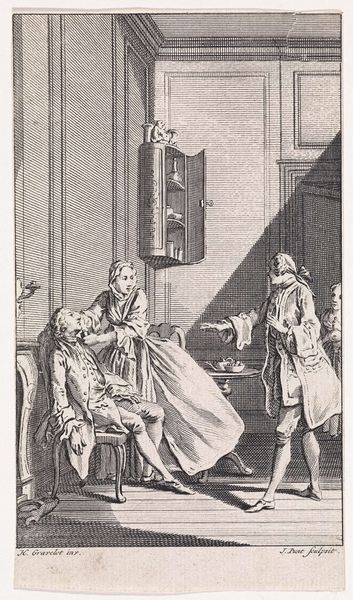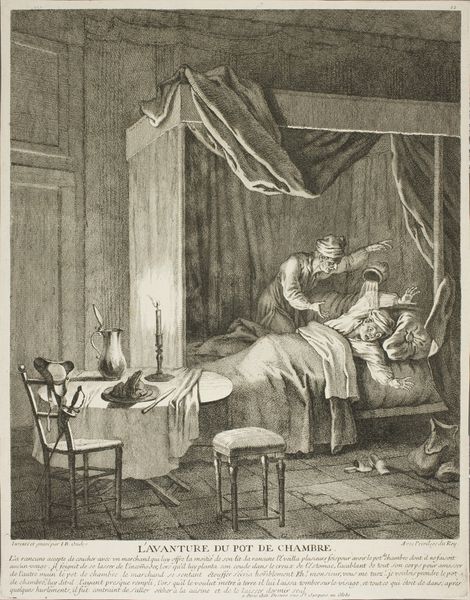
print, engraving
#
portrait
#
narrative-art
# print
#
pencil sketch
#
old engraving style
#
traditional media
#
figuration
#
romanticism
#
19th century
#
line
#
history-painting
#
engraving
Dimensions: height 554 mm, width 398 mm
Copyright: Rijks Museum: Open Domain
Editor: This is a print titled "Sterfbed van prins Willem V, 1806," made in 1806 by Jacobus Wijsman. It's an engraving, so lots of sharp lines depicting the Prince on his deathbed. The mood feels heavy and theatrical, almost staged. What do you see in this piece? Curator: Beyond the literal scene, I see a confluence of symbols carefully chosen to evoke particular emotions and legitimize power. Notice the crown suspended above the bed, juxtaposed with the angel ascending with Willem V’s spirit? It creates a potent visual narrative of earthly authority yielding to divine judgment and acceptance. Editor: Yes, I noticed that angel. And the crown feels so heavy above the bed, doesn’t it? Curator: Precisely. The symbols tell a story about duty, sacrifice, and the presumed divine right of kings, even in death. Consider the portraits on the wall; they are likely his ancestors. This image anchors Willem V within a historical and familial lineage, reinforcing the idea of inherited leadership and legacy. Who do you imagine this print was meant to serve? Editor: Perhaps as propaganda? To ensure his legacy despite the changing political landscape of the time? Curator: Indeed. Remember that prints were a popular medium for disseminating information and shaping public opinion. This image could very well serve as a tool to solidify Willem V's image among his supporters, even after his death. What lasting feeling does the piece leave you with? Editor: The theatrical composition still feels…odd to me, as if manipulating reality to manufacture a narrative, even after death. I found the symbolic links insightful. Curator: That critical assessment is important. Visuals are tools that express specific aims through enduring symbols, so it is helpful to always question what a symbol meant, means now, and will mean later.
Comments
No comments
Be the first to comment and join the conversation on the ultimate creative platform.
